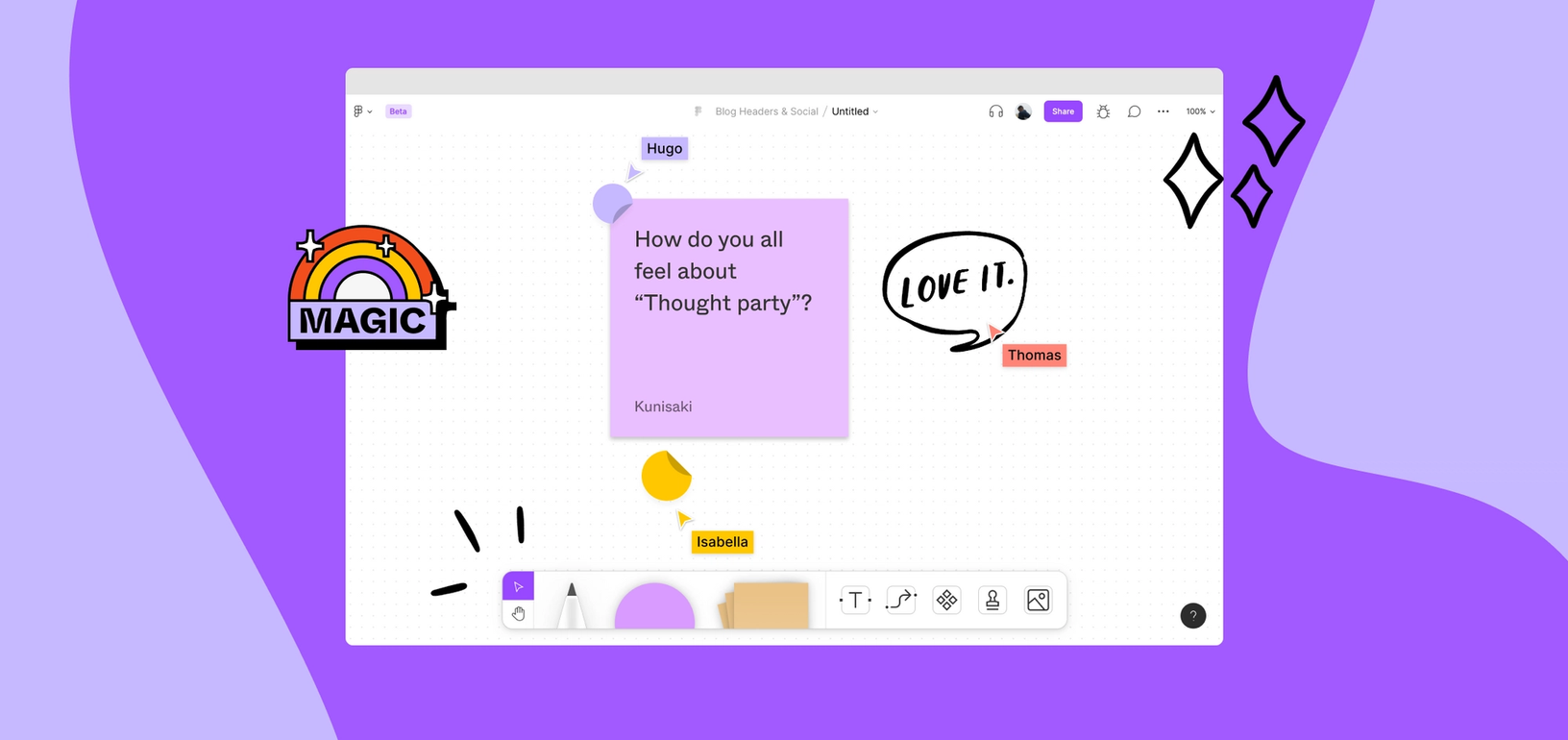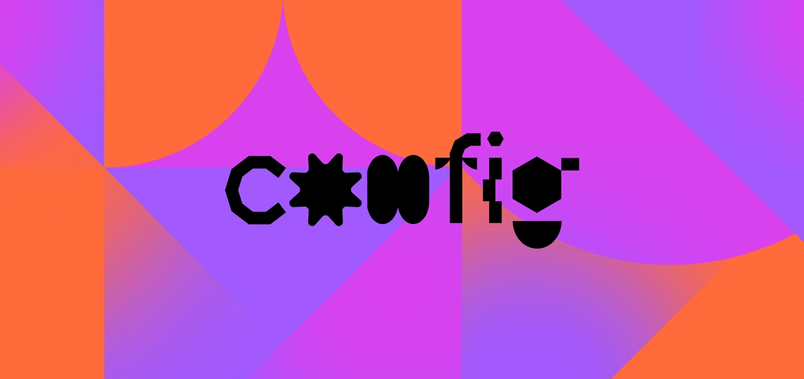Introducing FigJam


Today, we’re introducing FigJam, an online whiteboard for teams to brainstorm and ideate together.
A lot has changed in the five or so years since Figma launched in closed beta, or as Dylan put it at the time: when design met the internet Today, after three years of silence and hard work, I finally get to announce the launch of Figma, a collaborative interface design tool. 
Design: Meet the internet
A decades-long shift from the physical to the digital has accelerated. Design, once on the periphery, has moved closer to center stage The tech industry, which long exalted the engineer, has finally begun to appreciate the designer too. Growth Data Scientist Wendy Lu shares a look at how collaboration has changed over the past year, including how teams at Dropbox and Atlassian are moving offline processes online.
The decade of design: How the last 10 years transformed design’s role in tech

By the numbers: One year of remote work
What this all adds up to is less time spent together in person and more time spent in online spaces like Figma, which we’ve seen people use in all kinds of creative and unexpected ways—from multiplayer pong to ice breakers to meal planning and brainstorming.
In each of these use cases, pixels aren't being pushed. Products aren't being designed. People are simply looking for a space to share ideas and connect.
We can empathize—our team has been working from home, too. So it became clear to us early on, especially after what felt like our zillionth video call, that there’s something special about simply “being” in Figma together—that beyond a powerful interface design tool, Figma can serve as an energizing space for people across teams and geographies to come together, iterate and explore.
With this insight in hand, we kicked off an exploration of our own into whether we could make Figma a more inviting place for these types of free-form interactions. If we could do that, we figured, we could also bring more people into the earliest stages of design. After all, Figma’s vision is to make design accessible to everyone. Here was a chance to take the next step.
But after digging a bit further, we realized that these interactions needed their own dedicated space—one where anyone felt welcome and designers felt at home, so everyone could feel comfortable jumping in and sharing ideas.
FigJam: Where the best product ideas begin
That’s why we built FigJam, an online whiteboard made for designers to ideate and brainstorm with their extended teams. Think of it as a lightweight version of Figma that’s easier to learn and even more fun to use. It’s for defining user problems, looking for inspiration, and exploring ideas.
There’s a ton of functionality built into FigJam that makes it a great space for early-stage design thinking. In multiplayer, teams can use sticky-notes, emojis and drawing tools to brainstorm. In single-player, systems thinkers can use shapes and pre-built lines and connectors to map user flows and build new processes.

FigJam is also designed to be a one-stop-shop for easy collaboration. Built-in audio functionality makes it easy for teams to “talk it out” without having to pick up the phone or start a video call. And unlike other options, FigJam works seamlessly with Figma, so teams can keep all their design work—from initial concept to final prototype—all in the same place.

We also wanted to bring the same warmth and serendipity that people love about Figma to FigJam, whether you’re ideating, ice-breaking, or just “hanging out.” Cursor chats, emojis, stamps, and other carefully designed features allow you to express yourself fully.
Put another way, in FigJam fun meets functionality.
That’s one reason why teams at Stripe, Netflix, Salesforce, Twitch and more have used FigJam over the past few months to brainstorm and ideate. Their feedback, the good and the bad, has not only been essential to our team; it has also affirmed that FigJam fills a deep user need.
Here’s how Discord’s Head of Design, Kevin Wilson, described it:
FigJam has been awesome for the Discord product design team because it is so much like Figma itself—but a focused, uncomplicated version that works great for a brainstorm or a retrospective, or anything really.
In 2022, FigJam will have both free and paid plans ($3 and $5 per editor/month), but until then—for the rest of 2021—anyone, anywhere can use FigJam for free.
We hope you’ll check out FigJam, and if you do, let us know what you think. Because our goal isn’t only to make FigJam a place where the best product ideas begin, but to make Figma the best home for designers and their teams to come together and build together—from start to finish, end to end.

Yuhki Yamashita is the Chief Product Officer at Figma, where he leads the product and design teams. Before joining Figma, he was at Uber for over 4 years, where he led the redesign of both the rider and driver apps. Prior to that, he was responsible for the YouTube app on iOS at Google.



